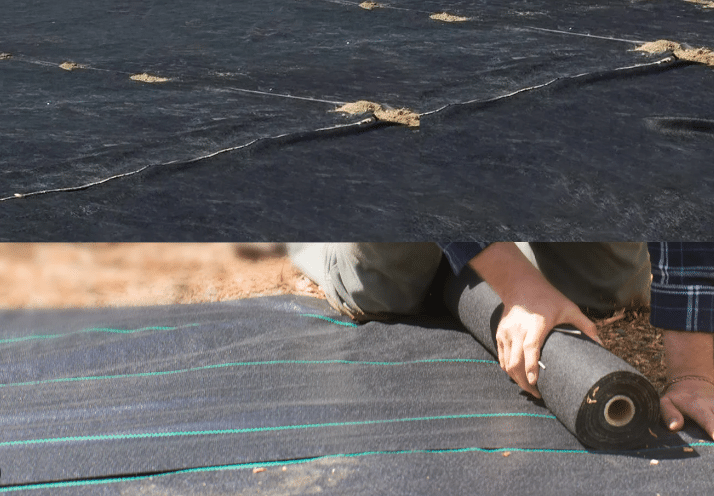Is geotextile fabric the same as landscape fabric?
While landscaping fabric and drain field fabrics are both geotextile materials, they are also very different for very different applications. Landscape fabric is used as a physical barrier (a weed barrier) in gardens and planting beds.
Is non-woven geotextile fabric the same as landscape fabric?
Non-woven geotextile fabric is the best choice for drainage applications where water flow through (permeability) is the main concern. Non-woven landscape fabric is commonly used in French-drains, drain-fields, and erosion control.
What is a Landscape Fabric?
Landscape fabric is a solid sheet of woven or non-woven polyester fibres used for gardening and landscaping applications. The material is perforated so light, air, and water can pass through the soil and prevent trapping moisture. This fabric is applied in the garden or yard primarily for weed control. However, it’s also used to avoid soil erosion, improve the look of the outdoor space, and define specific yard areas.
4 Types of Landscape Fabric
Landscape fabric comes in four different types. These are: woven, non-woven, spun, and perforated landscape fabrics:
Woven landscape fabric: This is the most common type of landscape fabric. It’s made from woven polypropylene, creating a durable yet permeable sheet that can be applied to control weeds in the garden. The material has tiny holes for air, light, and water to pass through. Some woven landscape fabrics are treated to block UV rays too.
Non-woven landscaping fabric: This material is made from non-woven polyester or polypropylene. Because it’s non-permeable, this landscape fabric isn’t suitable for the garden and is primarily used for large-scale hardscaping. Non-woven landscaping fabric is often laid under stone pavers to prevent gravel, rocks, and other decorative outdoor materials from sinking into the soil.
Spun landscape fabric: This product is crafted from bonded polyester fibers and is used for gardening and landscaping applications. It features permeable bonded in layers, so it’s durable, thick, and resistant to tearing. Spun landscape fabric is best used for hardscaping and areas where persistent weeds and invasive plants are sprouting. It’s also used to protect crops from pests. It’s not as porous as woven landscape fabric, so do not use it to define areas where crops grow.
Perforated landscape fabric: This is a lightweight landscape fabric with pre-cut holes for letting plants grow through. The holes are large so that the material won’t choke plants. Perforated landscape fabric is best used for gardening and is ideal for vegetable gardens or flower beds. Because the material is thin, it’s more vulnerable to tearing, but it’s also lightweight and easy to replace.

What are Geotextiles?
Geotextiles are used for commercial and geotechnical applications such as railway, embankment, dike, road, and coastal protection structures and construction. These products are designed for filtration, drainage, reinforcement, stabilization, and/or separation of soil layers.
3 Types of Geotextiles
Geotextiles come in three different types. These types are woven, non-woven, and knitted geotextiles.
Woven geotextile: This is a woven textile made from yarn. The weaving technique is similar to woven textiles for clothing. Woven geotextile is primarily used to prevent erosion, improve drainage, and maintain soil stability.
Non-woven geotextile: This product is made from bonded filament yarn or short staple fiber. The bonding process involves thermal, chemical, or mechanical methods or a combination of these processes to create a durable material. Thermal-bonded woven geotextiles are about 5-1 mm thick, while chemically bonded non-woven geotextiles are 3mm thick.
Knitted geotextile: This textile is created from loops of yarn interlocked into a tight, knitted weave. The knitting technique is often done in conjunction with other methods of geosynthetics manufacture, like heat bonding. The material is highly durable because of the tight-knitted weave. This type of geotextile is used for construction and various geotechnical applications.
Overall, geotextile landscape fabric is a versatile and effective solution for creating and maintaining beautiful, healthy outdoor spaces.
